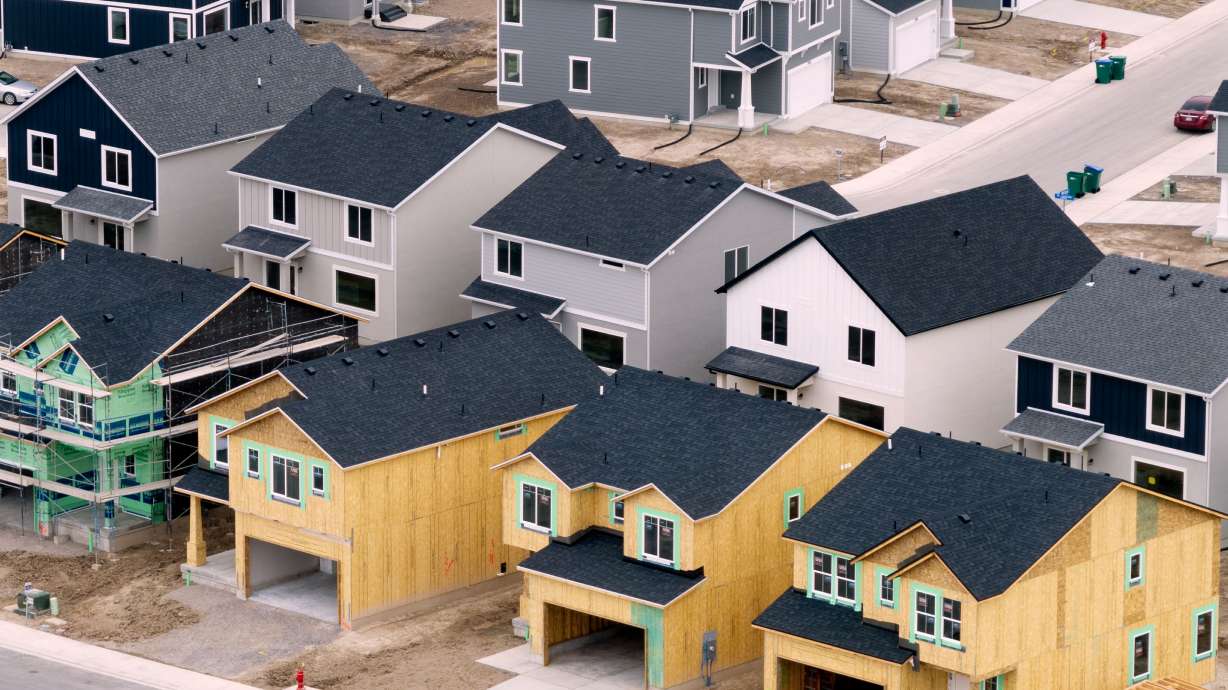Estimated read time: 4-5 minutes
This archived news story is available only for your personal, non-commercial use. Information in the story may be outdated or superseded by additional information. Reading or replaying the story in its archived form does not constitute a republication of the story.
MIDWAY — Ask anyone working in homelessness prevention what the top driver of homelessness is, and they'll almost certainly tell you it's a lack of affordable housing.
Identifying the issue, however, has turned out to be a lot simpler than fixing it, according to Utah homeless coordinator Wayne Niederhauser, in part because the housing market will rarely naturally provide for the type of housing attainable for anyone living on the brink of homelessness.
Utah is estimated to be short thousands of affordable housing units and — given the market incentives to build large, expensive homes — state investment in affordable housing is critical to improving outcomes for people, Niederhauser told a crowd of several hundred gathered at the Zermatt Utah Resort and Spa in Midway for the Utah Housing Matters Conference Monday.
He said, out of many factors, lack of housing supply is "at the very root, the very core" of homelessness.
"Why don't we have more affordable housing?" he asked. "I can tell you, it doesn't pencil. It will never naturally happen. It's going to take low-income housing tax credits. ... Without these kinds of programs, it won't happen, because it doesn't attract capital. That's the bottom line."
Niederhauser referenced several programs already approved in the state, including a 2023 bill allocating $50 million to provide thousands of Utahns with $20,000 loans to purchase a first home. Another program created this year and championed by Gov. Spencer Cox adds $300 million to fund low-interest loans to developments where 60% of the homes are considered affordable, or equal to about $350,000 for detached, single-family homes.
Steve Waldrip, who advises the governor on housing strategy and innovation, said the state can't hope to reduce homelessness or increase housing by relying on the market alone.
"We can't just allow the markets to go and do what they want because the markets don't respond to that; they respond to the highest and best," he said. "And we're not talking about the highest and best — what we want is a mix. We want the highest and best, but we want along with that the middle, and we want along with that the lower, and that is the best community mix that you can get out of these programs."
Many state leaders are painfully aware of the scope of Utah's housing affordability problem, which is why Niederhauser and Waldrip have been appointed to advise and coordinate efforts at the state level.
Waldrip said Utah, like many states, experienced a boom in development beginning after the end of World War II that buoyed the housing market for decades.
"That wave has now crested," he said. "We've ridden that wave for 80 years, and now that wave is crashing, and there's nothing behind it to pick up the generation that's coming."
He said in a traditional, healthy housing market, the median home price should be about three times greater than the median annual wage. That ratio has "broken" over the last decade in Utah, however, with the average home priced at about 6.5 times median annual earnings.
The impacts are acutely felt among the younger generations, many of whom despair of ever being able to afford a home.
"This is generally what's happening among this generation," Waldrip said. "They don't feel like the dream is available to them."
With the next general legislative session approaching early next year, advocates say they're already working with lawmakers to continue to work toward solutions to bring down costs, including by addressing land use regulations and other barriers. Others are simply asking the Legislature to re-up existing programs like the low-income housing tax credit, which is set to sunset in five years.
"We can't let (that) go away," said Dave Damschen, president and CEO of the Utah Housing Corporation.
With continued deficit spending in Washington and a national debt totaling well over $30 trillion, Damschen said he's also "very concerned" that Utah won't be able to rely on additional federal funding in the future.
"The federal government is running out of money, and they can't keep deficit spending this way much longer," he said.
Niederhauser said policymakers should be realistic that there's not a quick, easy solution to the lack of housing but remain committed to doing the hard work of finding solutions because the alternative could be dire.
"In every effort I was in, we were searching for the Holy Grail — the silver bullet that was going to solve our housing problems," he said. "I finally concluded: There isn't one."
Waldrip spoke to the urgency of moving in the right direction, saying: "Every day that we don't deal with this crisis is another day we're going to have a bigger problem."









